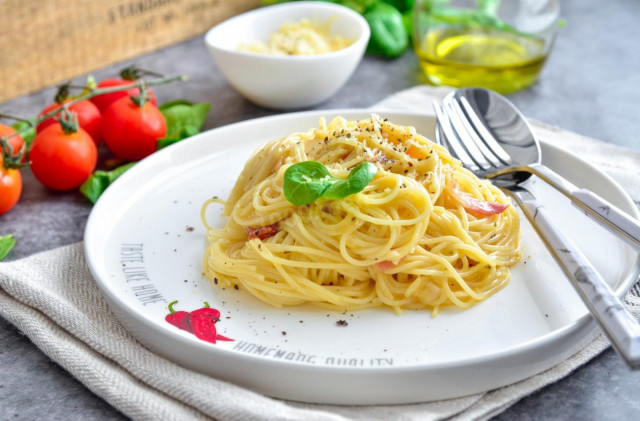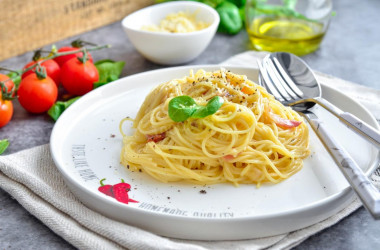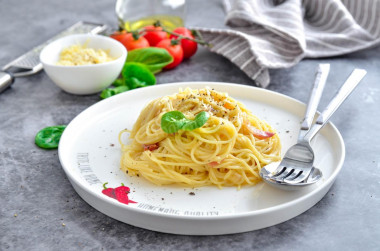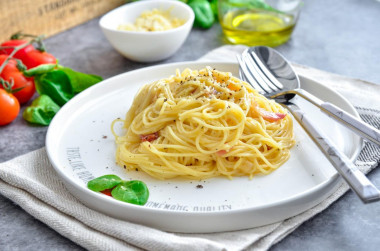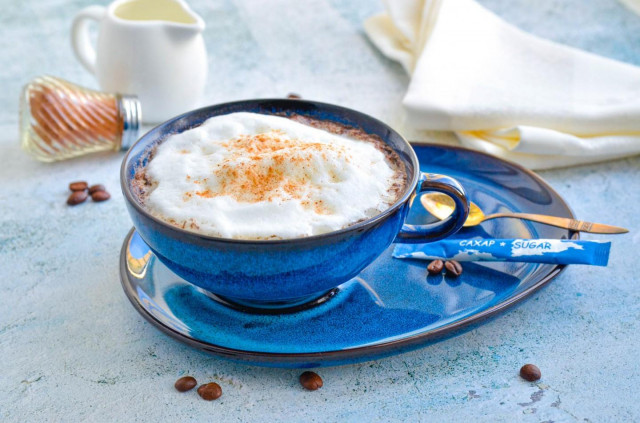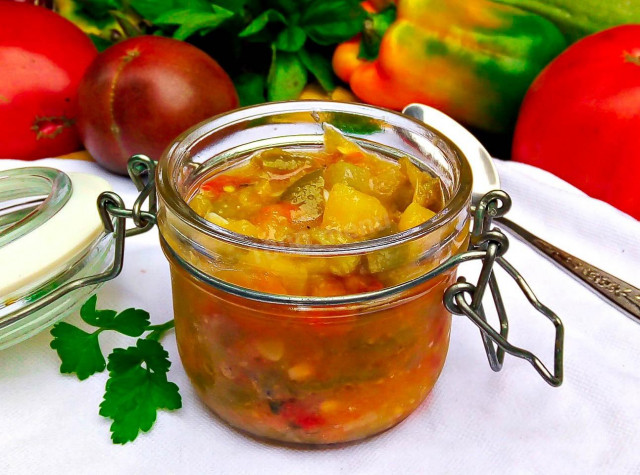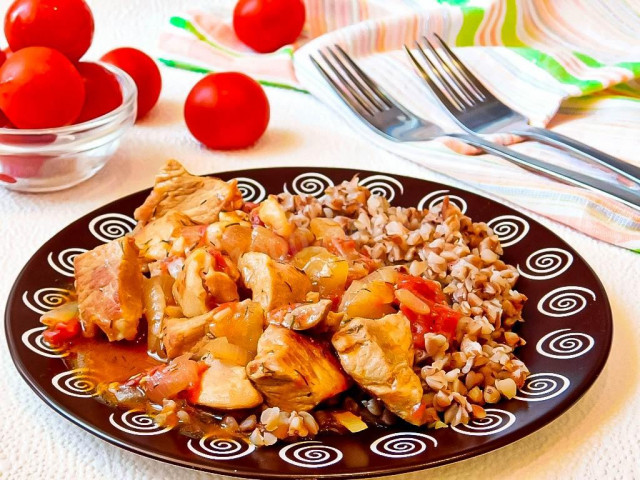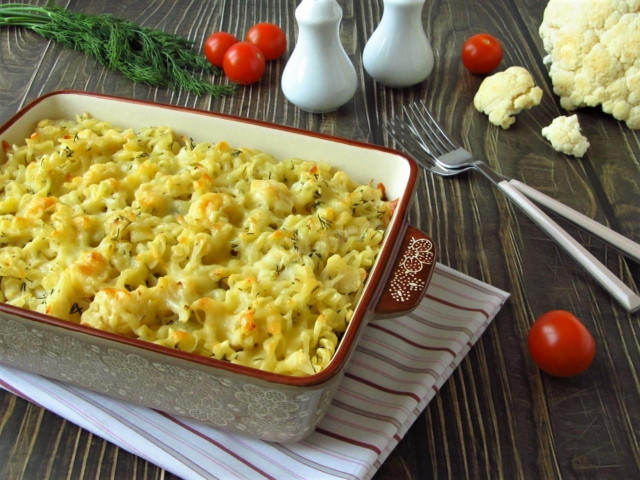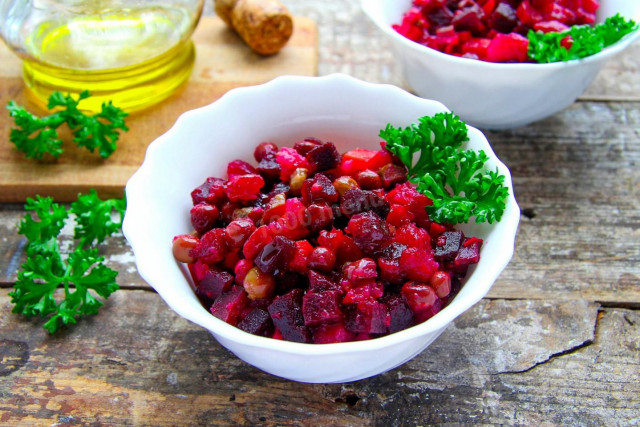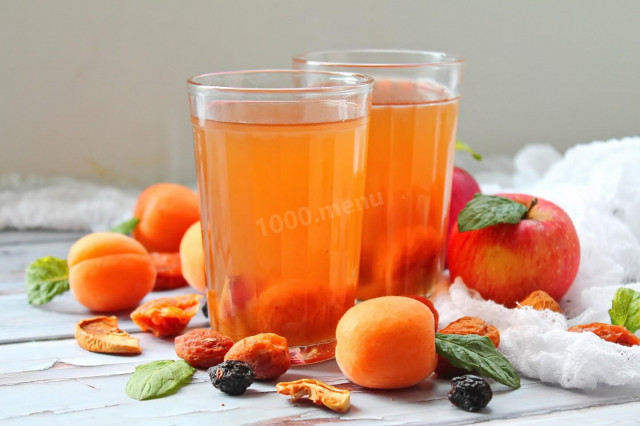Composition / ingredients
Step-by-step cooking
Step 1:
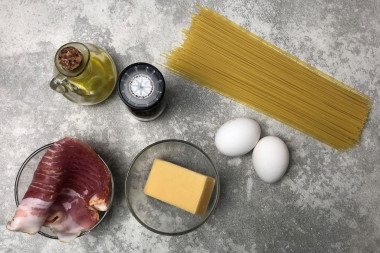
How to make spaghetti carbonara classic? Prepare the products. Choose pasta from durum wheat, it tastes better and does not boil. Eggs should be very fresh, as they are not subjected to strong heat treatment. Be sure to wash and dry them well before cooking. Brisket or ham will do instead of bacon.
Step 2:
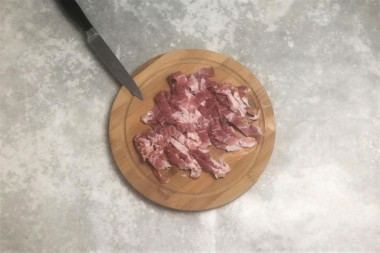
Cut the bacon into small pieces.
Step 3:
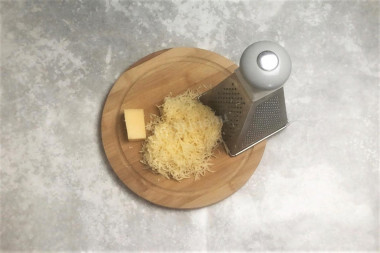
Grate the cheese on a fine grater.
Step 4:
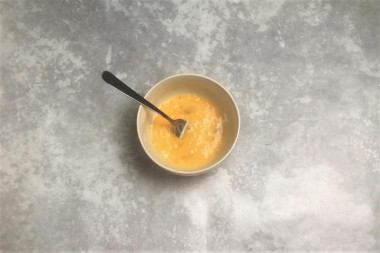
Break the eggs into a small bowl and beat them well with a fork.
Step 5:
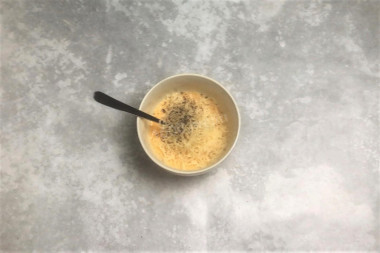
Add cheese to the eggs, setting aside a third for serving. And a good portion of freshly ground black pepper.
Step 6:
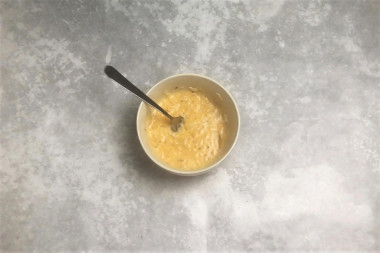
Mix the ingredients. This will be the basis for the sauce.
Step 7:
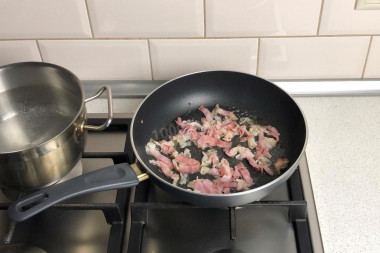
Take a frying pan, heat it over low heat. Pour in the olive oil and add the chopped bacon. Fry the bacon until the fat is transparent. At the same time, put a pot of water for cooking spaghetti, calculating 1 liter of water for every 100 grams.
Step 8:
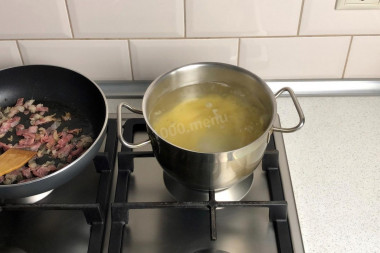
Set aside the frying pan with toasted bacon. Toss the spaghetti in boiling salted water. Do not salt too much, as the sauce with cheese will be salty. Cook the spaghetti according to the time indicated on the package. Make sure that the pasta is not overcooked, it should remain slightly firm, al dente.
Step 9:
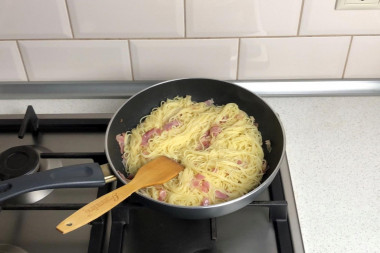
Then there are two cooking options. You can flip the spaghetti into a colander, and pour the sauce into the pan with the bacon and warm it up slightly. But in this case, there is a chance that the eggs will curdle. Therefore, I transfer the finished spaghetti immediately to the frying pan with bacon and mix them.
Step 10:
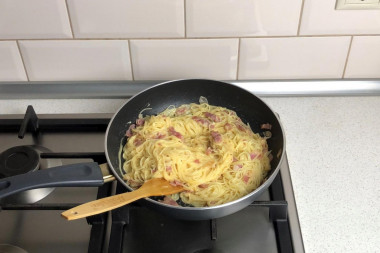
And only then pour out the sauce. The pasta cools down a little during this time and the eggs do not curdle. It remains only to mix the pasta with the sauce well. Spaghetti carbonara is served immediately, hot, sprinkled with the remaining cheese and ground pepper. Don't spare the pepper, because it's carbonara.
I cook spaghetti carbonara often, I always use this recipe, without cream. The sauce turns out to be tender, smooth, it envelops every pasta. Very tasty! And fragrant thanks to fresh pepper.
How do I know if an egg is fresh? Break it into a separate container. First of all, there should be no unpleasant smell. The protein of fresh eggs will be transparent and clean. The yolk should not spread and will be shiny, convex, homogeneous.
Be sure to wash the eggs before use, as even the seemingly clean shell may contain harmful bacteria. It is best to use food detergents and a brush.
How to boil pasta properly? Take a spacious saucepan, pour water at the rate of 100 grams of pasta 1 liter of water. The main thing is that the products float freely in the liquid. Add salt to taste. Bring the water to a boil. It is important to put the pasta in boiling water, otherwise they may stick together. Cook over medium heat, stirring occasionally, until fully cooked or al dente (cooking time is always indicated on the package). Put the finished pasta in a colander and let the liquid drain. It is not necessary to rinse the finished pasta with water. If you do not plan to immediately mix the pasta with the sauce, then in order to avoid sticking hot pasta, you can send them from the colander back into the pan and add a teaspoon of olive oil (or a piece of butter)and mix gently.
Real men's food — spaghetti, bacon, eggs and cheese. Traditionally, carbonara paste was liberally sprinkled with ground pepper. It is very similar to coal dust, hence the name, coal sounds like carbone in Italian.
Caloric content of the products possible in the composition of the dish
- Chicken egg - 157 kcal/100g
- Egg white - 45 kcal/100g
- Egg powder - 542 kcal/100g
- Egg yolk - 352 kcal/100g
- Ostrich egg - 118 kcal/100g
- Dutch cheese - 352 kcal/100g
- Swiss cheese - 335 kcal/100g
- Russian cheese - 366 kcal/100g
- Kostroma cheese - 345 kcal/100g
- Yaroslavsky cheese - 361 kcal/100g
- Altai cheese 50% fat content - 356 kcal/100g
- Soviet cheese - 400 kcal/100g
- Cheese "steppe" - 362 kcal/100g
- Uglich cheese - 347 kcal/100g
- Poshekhonsky cheese - 350 kcal/100g
- Lambert cheese - 377 kcal/100g
- Appnzeller cheese with 50% fat content - 400 kcal/100g
- Chester cheese with 50% fat content - 363 kcal/100g
- Edamer cheese with 40% fat content - 340 kcal/100g
- Cheese with mushrooms of 50% fat content - 395 kcal/100g
- Emmental cheese with 45% fat content - 420 kcal/100g
- Gouda cheese with 45% fat content - 356 kcal/100g
- Aiadeus cheese - 364 kcal/100g
- Dom blanc cheese (semi-hard) - 360 kcal/100g
- Lo spalmino cheese - 61 kcal/100g
- Cheese "etorki" (sheep, hard) - 401 kcal/100g
- White cheese - 100 kcal/100g
- Fat yellow cheese - 260 kcal/100g
- Altai cheese - 355 kcal/100g
- Kaunas cheese - 355 kcal/100g
- Latvian cheese - 316 kcal/100g
- Limburger cheese - 327 kcal/100g
- Lithuanian cheese - 250 kcal/100g
- Lake cheese - 350 kcal/100g
- Gruyere cheese - 396 kcal/100g
- Ground black pepper - 255 kcal/100g
- Boiled bacon - 447 kcal/100g
- Olive oil - 913 kcal/100g
- Spaghetti - 338 kcal/100g

